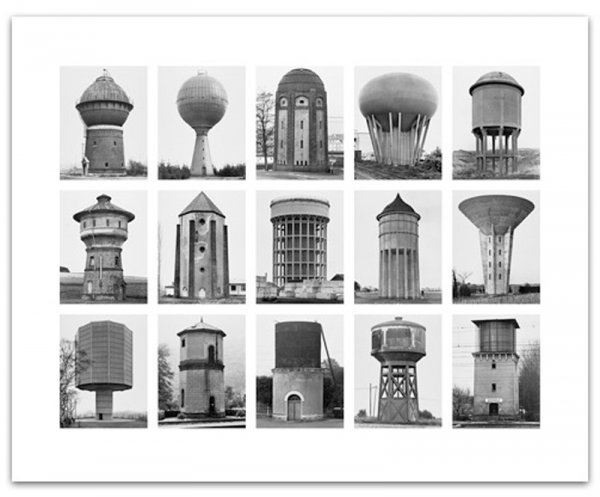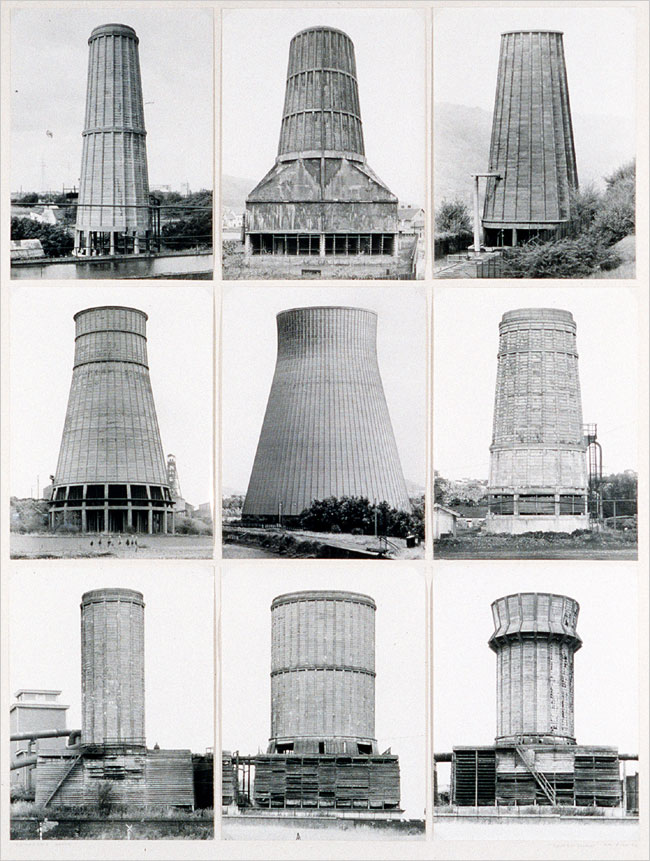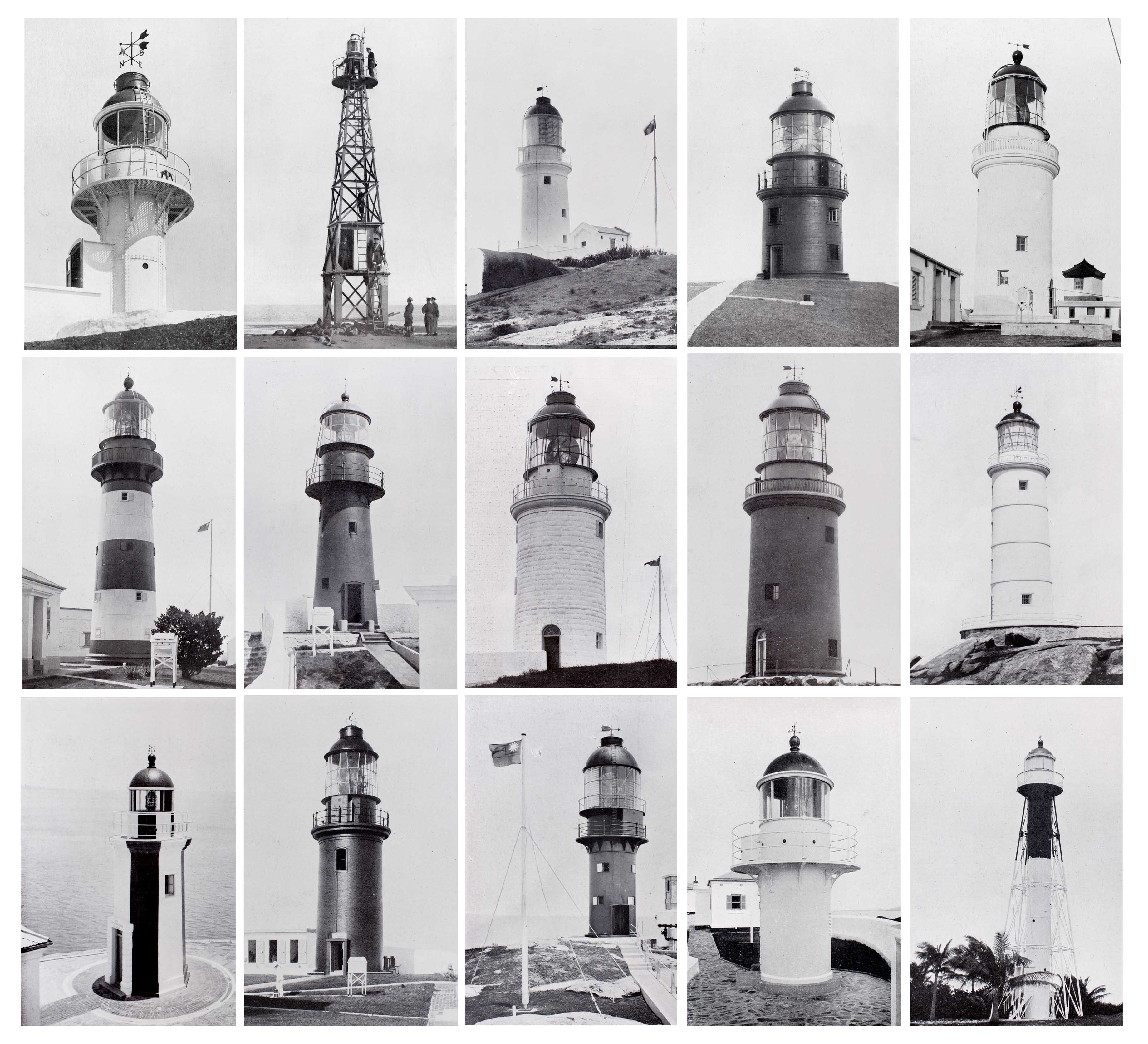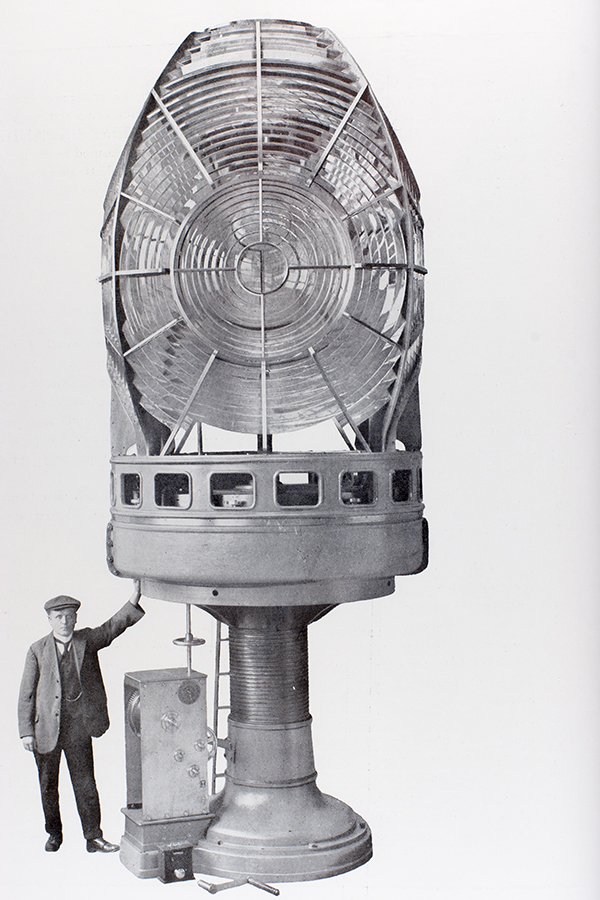There are few photographers with a body of work as obsessively cohesive as that of the German collaborative artists Bern and Hilla Becher. The duo, Bernhard “Bernd” Becher (1931 – 2007) and Hilla Becher (born 1934), are best known for their extensive series of photographic images, or typologies, of industrial buildings and structures in Europe and North America. A married couple, they worked together for more than five decades, an impressive achievement.
The Bechers sought to depict how a single type of structure (water tower, blast furnace, etc.) varied markedly in its external appearance, due to its specific historical and geographical context. This site-specificity was most clearly visible when they showed their photographs in groupings and grids, comparing the different forms, which soon became their preferred method of presentation. The Becher’s work, with its emphasis on impersonal series, was successfully integrated into the broader arena of Minimal and Conceptual Art. But this wasn’t something that worried them. Hilla once said, “The question ‘is this a work of art or not?’ is not very interesting for us.’’
I could also further discuss the effect the Becher’s work had on subsequent generations (known as the Düsseldorf School). This post, however, is focused on another element highlighted in their work: memory or preservation. The Bechers were documenting the rapid effects of technological development, which left earlier innovations in the dust, often to be destroyed. They worked actively to preserve the memory of these structures by photographing them, often scheduling their projects around demolition dates. Their work freezes the images of these structures, stripping away sentimental or nostalgic responses from the viewer, who is unable to know if the structures shown were demolished or still extant.
The Becher’s work came to my mind when I was working with Coastwise Lights of China: an illustrated account of the Chinese Maritime Customs Lights Service by T. Roger Banister, published in 1932. The book celebrates the benefits to world trade that the Customs Service’s lighthouses provided. It contains nearly a hundred images of lighthouses, creating a typology of them. This typology is not as meticulous as Becher’s, but it gives you a good idea of the types and locations where they were built. Just over a decade after this book was published, towards the end of the Pacific war, many of these structures were bombed by the US Air Force, and destroyed or very badly damaged; so this book became an invaluable document preserving images of these lighthouses as they stood in 1932.
The HPC project is rich in lighthouse materials. We have also digitised photographs held by the family of David Marr Henderson, who was the Engineer-in-Chief of the Chinese Maritime Customs from 1869 until 1898, and who designed many of the lights shown in Banister’s book. Our holdings are further augmented with two dozen photographs from Augustus Anthony, who worked as a Clerk of Works in the Customs from 1911-13.
The Customs Service prided itself on its work in constructing this network of lights, which facilitated China’s incorporation into global networks of shipping communications. Lighthouses played important symbolic roles too, they were sites of modernity, and of ‘civilisation’, in the sense that they were public goods designed to prevent loss of life at sea, that were not paid for by those who benefited from them. It was as important to display your lights at international expositions as it was for their lamps to shine out over Chinese coastal waters and along its major rivers. Banister’s book was commissioned by the then Inspector-General of the Maritime Customs, Sir Frederick Maze, partly to showcase the achievement of the Service, but quite clearly – as his private correspondence shows – as part of a campaign to secure personal recognition and honour in the UK.
Setting that aside, the lighthouses constructed from the late 1860s onwards by the Customs, with their equipment coming from Birmingham or Paris, form a notable and lasting achievement – most of these sites still house lights. The images in Banister’s book form a haunting record of this programme.





